- Home
- Ellen Datlow
The Best of the Best Horror of the Year
The Best of the Best Horror of the Year Read online
Also Edited by Ellen Datlow
A Whisper of Blood
A Wolf at the Door (with Terri Windling)
After (with Terri Windling)
Alien Sex
Black Feathers: Dark Avian Tales
Black Heart, Ivory Bones (with Terri Windling)
Black Swan, White Raven (with Terri Windling)
Black Thorn, White Rose (with Terri Windling)
Blood is Not Enough: 17 Stories of Vampirism
Blood and Other Cravings
Children of Lovecraft
Darkness: Two Decades of Modern Horror
Digital Domains: A Decade of Science Fiction and Fantasy
Fearful Symmetries
Haunted Legends (with Nick Mamatas)
Haunted Nights (with Lisa Morton)
Hauntings
Inferno: New Tales of Terror and the Supernatural
Lethal Kisses
Little Deaths
Lovecraft Unbound
Lovecraft’s Monsters
Mad Hatters and March Hares
Naked City: Tales of Urban Fantasy
Nebula Awards Showcase 2009
Nightmare Carnival
Off Limits: Tales of Alien Sex
Omni Best Science Fiction: Volumes One through Three
Omni Books of Science Fiction: Volumes One through Seven
OmniVisions One and Two
Poe: 19 New Tales Inspired by Edgar Allan Poe
Queen Victoria’s Book of Spells (with Terri Windling)
Ruby Slippers, Golden Tears (with Terri Windling)
Salon Fantastique: Fifteen Original Tales of Fantasy (with Terri Windling)
Silver Birch, Blood Moon (with Terri Windling)
Sirens and Other Daemon Lovers (with Terri Windling)
Snow White, Blood Red (with Terri Windling)
Supernatural Noir
Swan Sister (with Terri Windling)
Tails of Wonder and Imagination: Cat Stories
Teeth: Vampire Tales (with Terri Windling)
Telling Tales: The Clarion West 30th Anniversary Anthology
The Beastly Bride: And Other Tales of the Animal People (with Terri Windling)
The Beastly Bride: Tales of the Animal People
The Best of the Best Horror of the Year
The Best Horror of the Year: Volumes One-Ten
The Coyote Road: Trickster Tales (with Terri Windling)
The Cutting Room: Dark Reflections of the Silver Screen
The Dark: New Ghost Stories
The Del Rey Book of Science Fiction and Fantasy
The Devil and the Deep
The Doll Collection
The Faery Reel: Tales from the Twilight Realm
The Green Man: Tales of the Mythic Forest (with Terri Windling)
The Monstrous
Troll’s Eye View: A Book of Villainous Tales (with Terri Windling)
Twists of the Tale
Vanishing Acts
The Year’s Best Fantasy and Horror (with Terri Windling, Gavin J. Grant, and Kelly Link)
EDITED BY ELLEN DATLOW
NIGHT SHADE BOOKS
NEW YORK | NEW JERSEY
Copyright © 2018 by Ellen Datlow
All rights reserved. No part of this book may be reproduced in any manner without the express written consent of the publisher, except in the case of brief excerpts in critical reviews or articles. All inquiries should be addressed to Start Publishing, 101 Hudson Street, 37th Floor, Suite 3705, Jersey City, NJ 07302.
Night Shade Books is an imprint of Start Publishing LLC.
Visit our website at www.nightshadebooks.com.
10 9 8 7 6 5 4 3 2 1
Library of Congress Cataloging-in-Publication Data is available on file.
Cover design by Erin Seaward-Hiatt
Cover artwork by Santiago Caruso (Volume One), Santiago Caruso (Volume Two), Allen Williams (Volume Three), Allen Williams (Volume Four), Allen Williams (Volume Five), Pierre Droal (Volume Six), Noia Hokama (Volume Seven), Blake Malcerta (Volume Eight), Kevin Peterson (Volume Nine), and Chenthooran Nambiarooran (Volume Ten)
Print ISBN: 978-1-59780-983-2
eISBN: 978-1-59780-644-2
Printed in the United States of America
Thank you horror writers for giving me hours of enjoyment over these last ten years.
Thank you to my editor Jason Katzman for shepherding through the first ten volumes of the series and hoping we work together on many more.
Thank you to all you readers out there who love horror fiction as much as I do.
TABLE OF CONTENTS
Introduction—Ellen Datlow
Lowland Sea—Suzy McKee Charnas
Wingless Beasts—Lucy Taylor
The Nimble Men—Glen Hirshberg
Little America—Dan Chaon
Black and White Sky—Tanith Lee
The Monster Makers—Steve Rasnic Tem
Chapter Six—Stephen Graham Jones
In a Cavern, in a Canyon—Laird Barron
Allochthon—Livia Llewellyn
Shepherds’ Business—Stephen Gallagher
Down to a Sunless Sea—Neil Gaiman
The Man from the Peak—Adam Golaski
In Paris, In the Mouth of Kronos—John Langan
The Moraine—Simon Bestwick
At the Riding School—Cody Goodfellow
Cargo—E. Michael Lewis
Tender as Teeth—Stephanie Crawford & Duane Swierczynski
Wild Acre—Nathan Ballingrud
The Callers—Ramsey Campbell
This Stagnant Breath of Change—Brian Hodge
Grave Goods—Gemma Files
The Ballad of Ballard and Sandrine—Peter Straub
Majorlena—Jane Jakeman
The Days of Our Lives—Adam L.G. Nevill
You Can Stay All Day—Mira Grant
No Matter Which Way We Turned—Brian Evenson
Nesters—Siobhan Carroll
Better You Believe—Carole Johnstone
About the Authors
Acknowledgment of Copyright
About the Editor
INTRODUCTION
Welcome to this celebration of the last ten years of great short horror fiction.
After editing the horror half of The Year’s Best Fantasy and Horror for twenty-one years, the series was discontinued, but Night Shade Books stepped up and agreed to have me edit a horror annual, The Best Horror of the Year. Now, after ten years going strong, we’re presenting a Best of the Bests, including many of my favorite stories chosen from the first ten volumes of the ongoing series.
I’ve picked between two and four stories from each of the ten volumes. One thing I realized during my reread is how much high-quality short horror fiction is being published now, more so than even ten years ago. Established authors continue to produce top-notch work, and it’s always a kick to pick a story by someone I haven’t published before. I never even think about that during the selection process, but it is something I note when summing up the year.
There are zombies and vampires and serial killers and ghost stories and Lovecraftian horror herein, proving something I’ve consistently emphasized when on panels that are intended to bemoan the tired old tropes of horror: there’s a reason these tropes/monsters don’t go away. They are not tired, they are not worn out. And as long as writers take a fresh look at them and continue to create bracing takes on them, they will never be. Trust me, you’ll see.
I haven’t read more than a handful of novels since I started working on my bests of the year because most of my time is taken up reading short stories. However, I thought I’d note a few of my favorites of the last ten years:
Sharp Teeth by Toby Barlow (Harper) is a werewolf novel told in verse, but don’t let that scare you away. It’s free verse, not rhyming, and the book is wonderfully gripping in part due to its compression of language. Go and read it, you won’t be disappointed. Highly recommended.
The Shadow Year by Jeffrey Ford (William Morrow) is a satisfying expansion of Ford’s novella “Botch Town,” creating a sharp snapshot of growing up on Long Island, New York, in the early 1960s. Two brothers and their young sister investigate mysterious occurrences in the neighborhood, partly with the help of the sister’s seemingly preternatural powers of detection. The adult narrator looking back at a dark year in his family’s hometown never intrudes on the story, and the characters are so realistic that it’s almost painful to read about them. Highly recommended.
Let the Right One In by John Ajvide Lindquist (Quercus) was originally published in Sweden in 2004. It made a huge impression when it was published in the United States and the United Kingdom in 2007, and the movie based on the novel was released in 2008. I saw the movie first and although I ended up enjoying the movie more than the novel, the novel is also quite good. Oskar, a bullied twelve year old, lives with his divorced mother in a housing complex, just outside Stockholm. Mysterious neighbors move next door, heralding several brutal murders in the area. Oskar meets one of the new neighbors, Eli, a 200-year-old vampire child as lonely as he is. There are some nice touches as their relationship develops. And there are also some terrific scenes indicating what happens when a vampire doesn’t follow its own kind’s rules, such as when it enters a dwelling uninvited. Both novel and movie do a terrific job of depicting pre-teen loneliness and the cold, bleak Swedish winter.
Darling Jim by Christian Moerk (Henry Holt) opens with the shocking discovery of the bodies of two sisters and their aunt in a suburb of Dublin and unfolds into even more horror, all radiating from a seductive traveling storyteller who enchants every woman and girl within reach of his uncanny charms. Darling Jim, as he is dubbed by those he seduces, entrances the inhabitants of the pubs he visits as he weaves his tale of two brothers, a wolf, a curse, and a princess. The mystery of the three deaths is painstakingly unraveled by a young mailman who really wants to be a graphic novelist as he doggedly searches for clues to the truth after accidentally discovering the diary of one of the sisters.
The City & The City by China Miéville (Del Rey) is a dark, metaphysical police procedural that opens with the discovery of a body. The mystery is contingent on the unusual world Miéville creates, a world as bizarre in its way as any Miéville has previously envisioned: in an alternate reality from our own, two eastern European cities—Besźel and Ul Qoma overlap—in the same space, yet their citizens are forbidden to interact or acknowledge the existence of any person/event/physical location in the other, overlapping city. Breach is invoked for those caught breaking the law, and the guilty are taken away, never to be seen again. A detective from the Besźel Extreme Crime Squad is assigned to the murder and his life is utterly changed. It’s a great read.
The Little Stranger by Sarah Waters (Riverhead) is a terrific historical novel that slowly ratchets up the tension as it becomes a disturbing psychological puzzle and haunted house story. The story is told from the point of view of a middle-aged local doctor in a post World War II Britain still suffering shortages. Dr. Faraday becomes physician to the owners of Hundreds Hall, the now-dilapidated estate on which his mother worked as a maid years earlier. Are the members of the household becoming unhinged from stress, or is there something at Hundreds that is actually trying to “get” them? Despite the house’s fall into ruin, it becomes the focal point of Faraday’s longed for acceptance by the local gentry and his stubborn, extreme rationalization; plus, this fixation that has dominated his imagination since childhood prevents him from actually helping before it’s too late.
A Dark Matter by Peter Straub (Doubleday) is an elegant, enjoyable gem of a novel by one of the best horror stylists working in the field today. The book, which reads much quicker than its 416 pages would suggest, is about the aftermath of a cataclysmic event that took place in the sixties when a group of teenagers were led by their self-styled guru into a mystical miasma for which none of them were prepared, with dire consequences for all of them. Now, years later, the one member of the group who did not fall under the spell of the guru is driven to investigate what exactly happened to his friends.
The Millennium Trilogy [The Girl with the Dragon Tattoo (Vintage), The Girl Who Played With Fire (Vintage), and The Girl Who Kicked the Hornet’s Nest (Knopf)] by Stieg Larsson creates one of the most memorable heroes of modern fiction: Lisbeth Salander, a young woman systematically abused by the Swedish social system from childhood, who has despite this grown into a brilliant computer hacker (although she’s lacking “people” skills). The three books make up a fascinating fictional study of government-wide corruption and truly live up to the first book’s original title Men Who Hate Women. The books are dark, violent, sexy, and riveting.
Dark Matter by Michelle Paver (Orion Books) is a suspenseful ghost story about a 1937 British arctic scientific expedition to Gruhuken, an isolated Norwegian bay. There are rumors that Gruhuken is haunted. The story is told mostly in the form of a diary written by Jack Miller, a twenty-eight-year-old desperate to escape London where he feels he’s a failure. Reminiscent of Dan Simmons’s brilliant epic novel The Terror in its depiction of the cold and bleakness of the Arctic winter, Dark Matter is a smaller, more intimate story, told in one voice. But the increasing claustrophobia, the sense of entrapment, and the haunting itself is all extraordinarily effective.
The Silent Land by Graham Joyce (Gollancz/Doubleday) is a dark fantasy about death, but it’s a contemporary, lush, joyous celebration of life, love, and trust in the face of mystery and fear. A married couple skiing in the Pyrenees are engulfed by an avalanche. Jake digs Zoe out and they make their way back to their hotel, which is deserted. From there, things take a strange turn as food left out by the missing hotel staff remains fresh over a period of days, people appear and disappear, and the couple believe that they must be dead—or in some kind of weird stasis. Just as you think you know where the plot is heading, the reader (and the characters) come across another little twist and turn. I, for one, was delighted to have followed the road.
The Devil All the Time by Donald Ray Pollock (Doubleday) is horrific at times but would be difficult to classify as horror—which shouldn’t put off those who enjoy a good dark mainstream novel about rural southern Ohio and West Virginia and the people who live there. The story has the rawness and unpredictability of the movie Winter’s Bone (I haven’t yet read the Daniel Woodrell novel). Among the characters are a man who believes that only by making more and more elaborate animal sacrifices can he save his dying wife, a murderous couple who pick up and torture young men, and a pair of scam artists posing as a preacher and his acolyte. Highly recommended.
Feast Day of Fools by James Lee Burke (Simon & Schuster). Although I enjoy the Dave Robicheaux novels a lot, I—like his creator—sometimes need a break from them. So Burke’s novel, featuring Sheriff Hackberry Holland, a man haunted by his experiences as a POW in the Korean War, is welcome. Holland has been central to two of Burke’s previous novels, including the early Lay Down My Sword and Shield with Holland having recently returned from the war. Feast Day of Fools is not supernatural but is a dark, complex, riveting story about evil doings and good deeds taking place along the Texas-Mexico border. An alcoholic ex-boxer witnesses the torture and death of a man in the desert and reports it to the Sheriff, setting in motion events that spotlight some of the flashpoints of contemporary US society: illegal immigration, drug running, the exploitation of children, psycho killers, corrupt politicians, and religious extremists.
Raising Stony Mayhall by Daryl Gregory (Del Rey) is a wonderful novel about a newborn discovered in a snowstorm after his mother has died. He’s dead. And then he opens his eyes—he’s a zombie. He’s named Stony by the
family that takes him in and is hidden from the authorities, who would exterminate him. Against all scientific reason, Stony grows up. And that’s where it gets even more interesting. This is a terrific new take on the zombie trope.
Zone One by Colson Whitehead (Doubleday) is an engrossing, realistic, horrific-with-a-touch of humor, poignant zombie novel. The zombie plague is under control and the government headquartered in Buffalo is gung ho on reconstruction, especially down in New York City. The story unfolds from the point of view of Mark Spitz, a member of one of several civilian cleanup crews stationed in lower Manhattan, assigned to mop up any surviving zombie squatters after heavy duty artillery has stormed through. As the team does its sweeps, Spitz recalls how he ended up where he is.
The Rook by Daniel O’Malley (Little, Brown) is a marvelous first novel that is dark and violent, yet laced with humor. It opens with one of the most engaging first lines I’ve read: “Dear You, The body you are wearing used to be mine.” And so, a young woman comes to consciousness with two black eyes, dead people lying on the ground around her, and no memory of who she is or why she’s in the situation in which she finds herself. The rest of the novel doesn’t disappoint, with a secret agency protecting Great Britain from supernatural forces, conspiracies, and plenty of mayhem to keep the reader entertained.
The Croning by Laird Barron (Night Shade Books) was the author’s first full-length novel (a short novel of about 43,000 words had been published a couple of years earlier). Barron puts his poor innocent schmo of a protagonist through torturous paces in a smashing, horrific retelling of Rumpelstilkin. Barron’s an expert at depicting Lovecraftian cosmic horror, and this book—with its echoes of places and characters from his short stories and novellas—is for every reader who devours those works.
Available Dark by Elizabeth Hand (Minotaur) is the sequel to Generation Loss, and both are excellent, compulsively readable contemporary dark suspense novels about Cassandra Neary, a brilliant photographer who lit up the ’70s punk landscape briefly but quickly, burned out with liquor and drugs. After escaping home to Manhattan after some real nastiness in Maine (Generation Loss), Neary is offered a great deal of money to fly all expenses paid to Helsinki and authenticate a series of five photographs purportedly taken by a famous photographer. Once there, she becomes embroiled in a Scandinavian death metal cult and sacrificial murder, ending up fighting for her life in economically destroyed Iceland. There are subtle elements of the supernatural threaded throughout this powerful novel. Hard Light is the third noir novel featuring Cass Neary, a former New York punk known for her transgressive photography, not to mention her very bad behavior. After fleeing Reykjavik on a stolen passport, she waits in London for her lover, and when he doesn’t show up is easily enticed to attend a party hosted by a gangster, becoming involved in dirty dealings in antiques, ancient instruments of movie making, beautiful and dangerous losers and, of course, drugs and alcohol. The plot is complicated, but even if the reader might occasionally become lost in the intricacies of who did what to whom, the experience of reading this gorgeously written novel fully makes up for it.

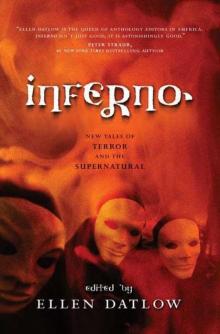 Inferno
Inferno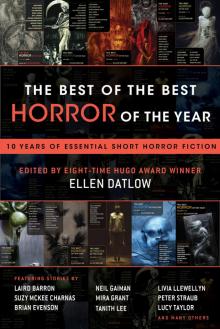 The Best of the Best Horror of the Year
The Best of the Best Horror of the Year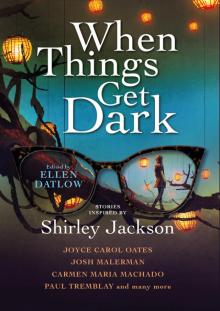 When Things Get Dark
When Things Get Dark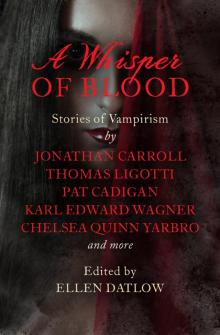 A Whisper of Blood
A Whisper of Blood Echoes
Echoes Blood Is Not Enough
Blood Is Not Enough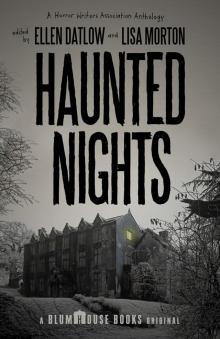 Haunted Nights
Haunted Nights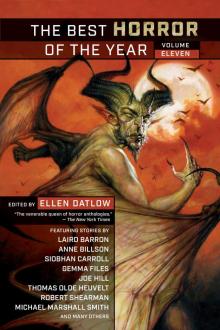 The Best Horror of the Year Volume Eleven
The Best Horror of the Year Volume Eleven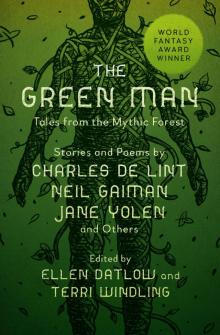 The Green Man
The Green Man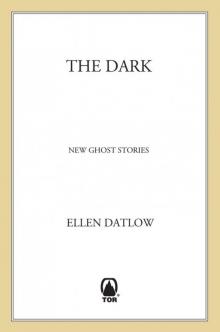 The Dark
The Dark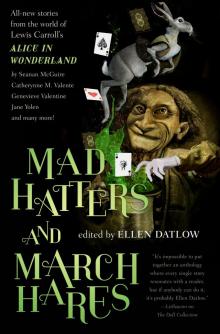 Mad Hatters and March Hares
Mad Hatters and March Hares Nebula Awards Showcase 2009
Nebula Awards Showcase 2009 The Devil and the Deep
The Devil and the Deep